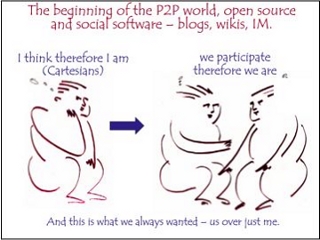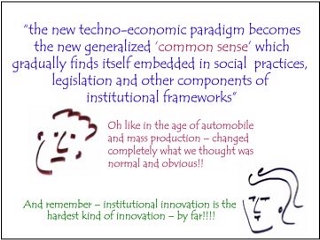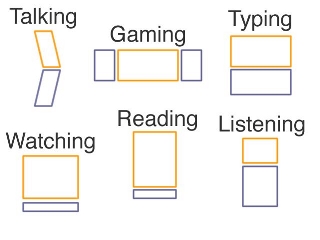I have been thinking about Naked DSL ever since the story about FCC is about to grant Bellsouth naked DSL petition broke a few days ago. And of course, the subsequent suspension of various states decision by FCC.
Most propongates of IP Telephony considered Naked DSL as absolutely neccessary to get VoIP adoption. Afterall, why bother with VoIP if you are forced to take up POTS before you can have your DSL to get IP Telephony. From that perspective, the decision to have Naked DSL is fairly simple one – no way we should grant Bellsouth petition.
But that’s coming from an evangelism point of view, one that may not convience many people who do not share the vision of IP Telephony. I shall give an alternative perspective why Bellsouth petition is dangerous. My argument is based on two assumptions:
1) First assumption is we believe in Free Market (and I absolutely do believe in Free Market). Free Market means we allow a competitive market to sort out the winners and losers. In this argument, we should allow Bellsouth to makes it own business decision to offer Naked DSL or not, excuses or not. They may choose to offer naked DSL like Qwest or they may not. If they didn’t then competitions like cable who does not bundled with POTS may be more attractive to consumers, and Bellsouth will lose market share.
2) Second assumption is we believe that monopoly (regardless natural or coercive) have to be regulated (or deal with by other means, e.g. antitrust) to ensure general public interests are not been abused by the monopoly. In this regard, Bellsouth petition should not be granted in areas where Bellsouth is a monopoly without alternative competitions. It wouldn’t be a competitive market if there is no competitions, would it?
Following these two assumptions, Bellsouth petition to pre-empt PUCs from mandating it to provide Naked DSL should not be granted by FCC. Instead, PUCs are in a better position to judge if Bellsouth odd to be regulated or to be allowed compete freely because siutations are different in different part of US.
While I like the concept of naked DSL, I think the decision to mandate Naked DSL or not would differ from places to places – ie, it is not a uniform yes or no. (Regardless how much I like IP Telephony, I believe in Free Market even more.)
But it is even harder in the context of Singapore, where only 1 in 5 broadband users are on cable, a market with choices but not quite competitive. Should we mandate Singtel Magix1 to provide Naked DSL because they are a market monopoly or should we let the market forces works itself out. For that, I am still thinking…
ps: Please note the disclaimer below : I do not speak for IDA here in this blog.
1 Singtel Magix is the sole DSL provider in Singapore. Everyone who provides DSL like Singnet or Pacnet is a reseller of Singtel Magix.
 And before anyone asked, yes, I did tried to google for it but no answer. Or rather, I get very conflicting answers like this which say no, and OTOH, this and this that say yes. Isn’t Google great?
And before anyone asked, yes, I did tried to google for it but no answer. Or rather, I get very conflicting answers like this which say no, and OTOH, this and this that say yes. Isn’t Google great?







 1. Supply Push –> Demand Pull, e.g. Mass Media –>
1. Supply Push –> Demand Pull, e.g. Mass Media –> 